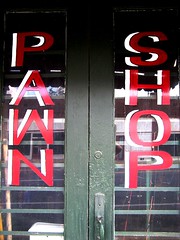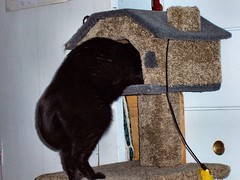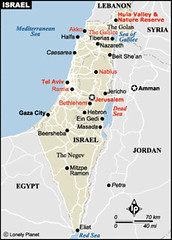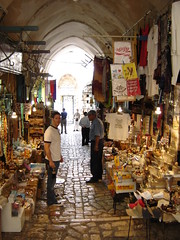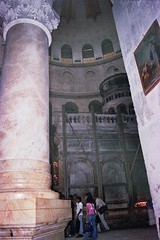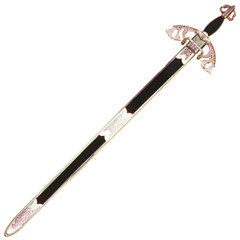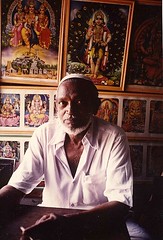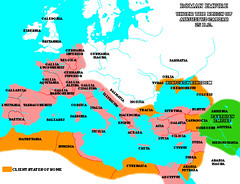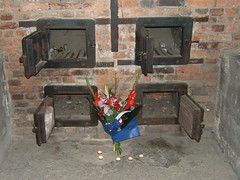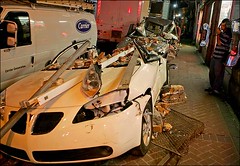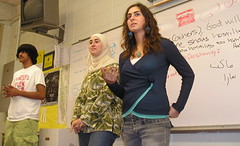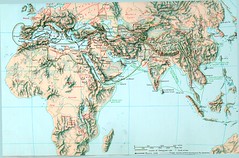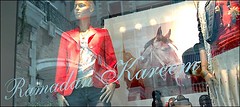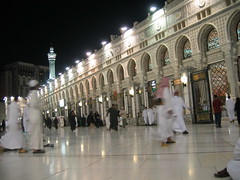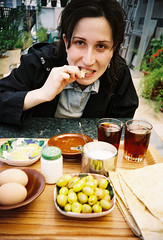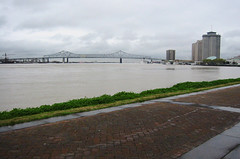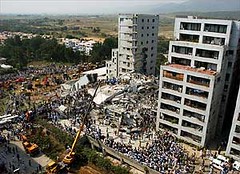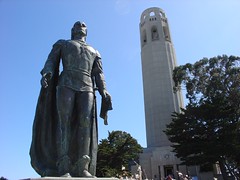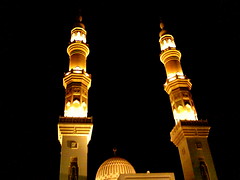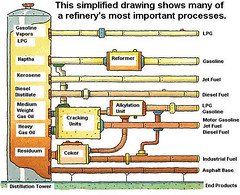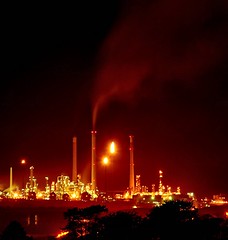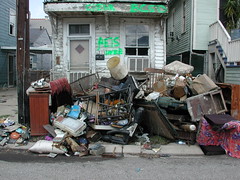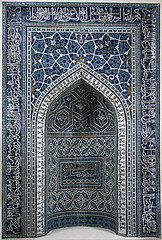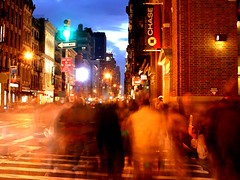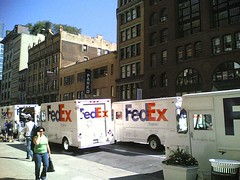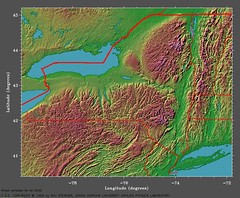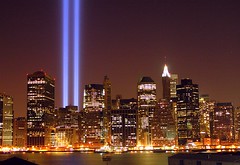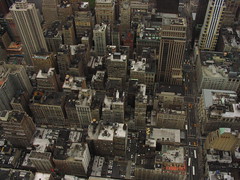Osama bin Laden biography
1. Osama was born in Saudi Arabia in a) 1952 b) 1957 c) 1962 d) 1967.
2. He was born to a wealthy family headquartered in the city of a) Damascus b) Cairo ec) Mecca d) Riyadh.
3. Osama’s opposition to the US is based on 2 principal ideas, according to his statements: (choose two answers)
a) Americans stereotype Arab Muslims as murderers and lacking in manners and education.
b) Americans have created a society in which blasphemous language, pornography, violence and drug use are widespread.
c) The US government supports Israel.
d) The US government demands vast amounts of oil from Saudi Arabia and other Arab-Muslim nations.
e) The US government stationed US troops in Saudi Arabia during the first Persian Gulf War, 1991, and kept them in place through 2003.
4. The 9/11 strike against the World Trade Center killed some a) 3000 b) 6000 c) 9000 d) 10,000.
5. Al qaeda is implicated in the bombing of US facilities in Kenya and Tanzania in 1998. The facilities were a) hospitals b) embassies c) barracks for US troops d) warehouses.
6. In 1979 Osama left Saudi Arabia to join Muslim fighters based in Pakistan and Afghanistan. They were fighting the invasion of Afghanistan by a) Iran b) the US c) Pakistan d) Russia.
7. The Muslim fighters, called mujahadin, were fighting what they called a holy war, or a) jihad
b) hajj c) salaam d) kaaba.
8. Al qaeda was initially a foe of the Soviet Union. The Muslim fighters switched principal targets and began to focus on the US during the a) Persian Gulf war, ‘91 b) invasion of Afghanistan by the US, ‘01 c) invasion of Kuwait by the Iraqis, ‘91 d) second Persian Gulf war, ‘04.
9. Osama was based in an African nation from 1991 to 1996. It was a) Egypt b) Kuwait c) Sudan d) Ethiopia.
10. In the late 1990’s Osama took refuge in Afghanistan. There he knew his training camps would be welcome. Afghanistan was ruled by a strict, radical Islamic group called the a) Taliban b) Sunni c) Al qaeda d) Jihad.
11. In 1998 President Clinton ordered an attack against Osama’s terrorist training camps in Afghanistan. The attempt was made via a) assassins b) small hit team of Marines c) cruise missles
d) bombing run from Kuwait.
12. In late 2001 the US shut down the Al qaeda camps by invading a) Saudi Arabia b) Afghanistan c) Pakistan d) Lebanon.
1. '57
2. Riyadh
3. US support of Israel
US placement of troops in Saudi Arabia (the nation of Mecca & Medina)
4. almost 3000 dead.
5. US embassies
6. Russia
7. jihad
8. Persian Gulf War I (1991)
9. Sudan
10. Taliban
11. cruise missles fired from the Arabian Sea.
12. Afghanistan
Monday, October 31, 2005
Middle Eastern tradition: waterpipe called a shisha or hookah
The process whereby the smoke is pulled through water in the traditional (they smoke fruit-flavored tobacco) shisha, or hookah, is a mystery to me. Is the working of a hookah worthy of investigation as a science project?
Above, a traveler's photo of a hookah room in Luxor, Egypt. Smoking a shisha is an after-meal or tea-time custom in much of the Mid East.
Thursday's quiz:
* Hand-drawn map of Israel and neighbors.
* Mult-choice on Osama bin Laden.
Vocab:
* Halloween: Celtic, Druid customs as observed among the ancient Irish.
* Dia de los Muertos, Mexico's "Day of the Dead."
* arabesque: mtifs in art as created by Arabic artists. Mostly they are
- vine-like, flowing
- geometric
* faux: "false"
* faux pas: social blunder.
Above, a traveler's photo of a hookah room in Luxor, Egypt. Smoking a shisha is an after-meal or tea-time custom in much of the Mid East.
Thursday's quiz:
* Hand-drawn map of Israel and neighbors.
* Mult-choice on Osama bin Laden.
Vocab:
* Halloween: Celtic, Druid customs as observed among the ancient Irish.
* Dia de los Muertos, Mexico's "Day of the Dead."
* arabesque: mtifs in art as created by Arabic artists. Mostly they are
- vine-like, flowing
- geometric
* faux: "false"
* faux pas: social blunder.
Sunday, October 30, 2005
NY Times article: "When Children Are Left Behind, the Economy Is, Too"
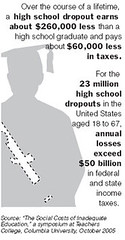
NY Times article: "When Children Are Left Behind, the Economy Is, Too"
Originally uploaded by trudeau.
What does it cost the nation when a child drops out of high school? That was the focus of a symposium at Teachers College at Columbia University last week called "The Social Costs of Inadequate Education," part of the college's Campaign for Educational Equity.
The answer is hundreds of billions of dollars. Looking at taxes alone, the researchers calculated that federal and state income tax receipts would be at least $50 billion higher each year if every high school dropout had graduated instead. And billions more are lost, the researchers figure, to added health costs and increased crime.
Friday, October 28, 2005
Pawn Shops and Jewish people: historic connection
"Why were Jewish people so often outsiders?" was the terrifically appropriate question posed by student Destine Roberts.
Here's my answer, based on avid reading and discussions:
* Jewish community's traditional self-sufficiency. Too much self-reliance can be distancing.
* Educational achievement has been unusually high in the Jewish community. Look at the lists of highly-regarded attorneys, authors, physicians and scientists for a sense of Jewish success.
* Religious independence: you will find no Jewish missionaries at home or abroad.
* Ghetto dwellers. Was it the Gentile (non-Jew) or the Jew who decided that life would be more comfortable when lived in a separate community?
* Christian distance: early Christian teaching was anti-Jewish in general. Because it was a sin for Christians to loan money for profit (it was called usury), it fell to the Jews to become the earliest money-lenders (and pawn brokers). See the Jewish character Shylock in Merchant of Venice.
* Scapegoating falls to minority groups. Aside from parts of NYC, Los Angeles and Warsaw, Jewish population has been small. Who to blame for general misfortune in the Christian community? Blame someone who's weaker than you and who is accustomed to stinging discrimination.
* Pogroms: historic European violence toward Jewish groups. See the classic play Fiddler on the Roof, about Jews in Russia.
Textbook reading: pp. 437 - 449, World Geography, on Zionism and the Palestinians.
Map:
Israel and Egypt as an unbroken block of land, indicating the numerous connections between the heritage of the Pharaohs and the Prophets.
* Memphis: before there was a city of Cairo, there was a capital city called Memphis. See the pyramid built in Memphis, TN, to commemorate the connection.
When TE Lawrence and Prince Feisal of the Arabs met with the British after WWI, the Arabs asked for autonomy (self-rule). After all, they'd defeated the Turks and helped the Brits win WWI. But the British and French decided to make money and extend their power by controlling and dividing the Mid East. The resulting mistrust between Arab and Westerner has been longstanding.
Here's my answer, based on avid reading and discussions:
* Jewish community's traditional self-sufficiency. Too much self-reliance can be distancing.
* Educational achievement has been unusually high in the Jewish community. Look at the lists of highly-regarded attorneys, authors, physicians and scientists for a sense of Jewish success.
* Religious independence: you will find no Jewish missionaries at home or abroad.
* Ghetto dwellers. Was it the Gentile (non-Jew) or the Jew who decided that life would be more comfortable when lived in a separate community?
* Christian distance: early Christian teaching was anti-Jewish in general. Because it was a sin for Christians to loan money for profit (it was called usury), it fell to the Jews to become the earliest money-lenders (and pawn brokers). See the Jewish character Shylock in Merchant of Venice.
* Scapegoating falls to minority groups. Aside from parts of NYC, Los Angeles and Warsaw, Jewish population has been small. Who to blame for general misfortune in the Christian community? Blame someone who's weaker than you and who is accustomed to stinging discrimination.
* Pogroms: historic European violence toward Jewish groups. See the classic play Fiddler on the Roof, about Jews in Russia.
Textbook reading: pp. 437 - 449, World Geography, on Zionism and the Palestinians.
Map:
Israel and Egypt as an unbroken block of land, indicating the numerous connections between the heritage of the Pharaohs and the Prophets.
* Memphis: before there was a city of Cairo, there was a capital city called Memphis. See the pyramid built in Memphis, TN, to commemorate the connection.
When TE Lawrence and Prince Feisal of the Arabs met with the British after WWI, the Arabs asked for autonomy (self-rule). After all, they'd defeated the Turks and helped the Brits win WWI. But the British and French decided to make money and extend their power by controlling and dividing the Mid East. The resulting mistrust between Arab and Westerner has been longstanding.
Thursday, October 27, 2005
Please avoid discretionary absences on Thursdays during your geography class! Thank you!
With 140 clients per day I need to marshall my moxie to keep up with the paper load. Nor am I simply registering your numbers. I am scoring and commenting on tons of essays and hand-drawn maps.
Thus I really appreciate those of you are consistently present on quiz day, Thursday.
Those who take Thursday for a maintenance appointment or other non-life-threatening condition: gee whiz!
Thus I really appreciate those of you are consistently present on quiz day, Thursday.
Those who take Thursday for a maintenance appointment or other non-life-threatening condition: gee whiz!
Mon, Oct 31: Halloween Silliness; Fri, Nov 4: Homecoming Treats
Mon, Oct 31, a thousand people desperate for a break in the academic routine will gather in the gym for an hour of music, peer recognition and deployment of the adolescent art of screaming and stomping. First Years (so-called ninth graders) are encouraged to wear orange - but it is not mandatory. Nor is orange hair.
Costumes are OK as long as they are moderate in nature. After all, many of our students look like costumers every day of the week.
Fri, Nov 4, CMHS celebrates homecoming with an amazing tradition: a 2-hour, on-campus picnic. Clubs make money selling fast food from booths in the quad. From hot dogs and pizza to ChickFila, you will support worthy causes when you buy lunch at the homecoming picnic. To keep CMHS standards alive, I've noticed that the French Club will vend cous-cous, crepes and truffles (surely chocolate truffles, wouldn't you say?).
Traditionally, the SGA brings in a commercial, inflatable slide and sparring ring and such activities. Dress for a day on the grass, I'd recommend.
Please do Not plan on ordering a lunch delivery or inviting friends to CMHS. The picnic tradition is safe and effective when we restrict the fun to the Magnet population.
Next Thursday:
hand-sketched map of Israel and neighbors. 20 pts.
Costumes are OK as long as they are moderate in nature. After all, many of our students look like costumers every day of the week.
Fri, Nov 4, CMHS celebrates homecoming with an amazing tradition: a 2-hour, on-campus picnic. Clubs make money selling fast food from booths in the quad. From hot dogs and pizza to ChickFila, you will support worthy causes when you buy lunch at the homecoming picnic. To keep CMHS standards alive, I've noticed that the French Club will vend cous-cous, crepes and truffles (surely chocolate truffles, wouldn't you say?).
Traditionally, the SGA brings in a commercial, inflatable slide and sparring ring and such activities. Dress for a day on the grass, I'd recommend.
Please do Not plan on ordering a lunch delivery or inviting friends to CMHS. The picnic tradition is safe and effective when we restrict the fun to the Magnet population.
Next Thursday:
hand-sketched map of Israel and neighbors. 20 pts.
Wednesday, October 26, 2005
Israel: Land of the Bible; Land of Violent Struggle
Identifications to know for this geo class:
Sea of Galilee
Nazareth
Tel Aviv
West Bank, disputed region (see atlas)
Jerusalem
Bethlehem
River Jordan
Dead Sea
Negev
Gaza
And all neighboring nations, the Red Sea, the Med.
Thursday Quiz:
1. Hand-sketched map of the Old City, Jerusalem (5 pts.)
2. Brief comparison essay; choose one topic ...
* Mecca and Jerusalem
* Great Mosque of Mecca and Dome of the Rock
* Use class notes.
Terms:
* Jewish communities:
Liberal, Reformed, Orthodox. Also, secular, or non-religious, Jews.
* Which group would observe the ancient dietary restrictions called Kosher? Orthodox; some Reformed.
* Orthodox means whatever is commonly accepted. But the Jewish Orthodox refers to a strictly conservative view point.
* Not all Arabs are Muslims. Nor are all Muslims Arabs.
Sea of Galilee
Nazareth
Tel Aviv
West Bank, disputed region (see atlas)
Jerusalem
Bethlehem
River Jordan
Dead Sea
Negev
Gaza
And all neighboring nations, the Red Sea, the Med.
Thursday Quiz:
1. Hand-sketched map of the Old City, Jerusalem (5 pts.)
2. Brief comparison essay; choose one topic ...
* Mecca and Jerusalem
* Great Mosque of Mecca and Dome of the Rock
* Use class notes.
Terms:
* Jewish communities:
Liberal, Reformed, Orthodox. Also, secular, or non-religious, Jews.
* Which group would observe the ancient dietary restrictions called Kosher? Orthodox; some Reformed.
* Orthodox means whatever is commonly accepted. But the Jewish Orthodox refers to a strictly conservative view point.
* Not all Arabs are Muslims. Nor are all Muslims Arabs.
Jew Vs. Arab in Israel: longstanding issues over control of the land of Palestine/Israel
Violence that comes from the struggle of Palestinian Arabs Vs Jews over control of this Biblical land continue. Please read this story and ask me questions about any mysteries in the account.
October 26, 2005
Five Killed in Bombing at Israeli Market
By THE ASSOCIATED PRESS
Filed at 11:06 a.m. ET
HADERA, Israel (AP) -- A Palestinian suicide bomber on Wednesday struck a food stand in the central Israeli town of Hadera, killing five people, wounding at least 30 and leaving a path of destruction at an open air market, police and rescuers said.
In a phone call to The Associated Press, the Islamic Jihad militant group claimed responsibility, saying it was to avenge the killing of Luay Saadi, leader of the group's military wing in the West Bank. Saadi was killed in a shootout with Israeli soldiers closing in on his hideout in the Tulkarem refugee camp on Monday.
Wednesday also marked the 10th anniversary of the assassination of Islamic Jihad chief Fathi Shekaki outside a Malta hotel in a mission widely attributed to Israel.
''Body parts reached all the way until my apartment building. The damage is really great,'' witness Eidan Akiva told Channel Ten TV, saying he lived 100 meters (yards) from the blast.
''All the stalls alongside just fell apart. The windows are all broken. It looks like a war was here,'' he said. ''This is a very crowded place, very central place. We never expected that this would happen. We thought our world was good but apparently we were wrong.''
Israel's withdrawal from the Gaza Strip last month has raised hopes for a return to Mideast peacemaking after five years of bloodshed. However, the sides have failed to capitalize on the pullout's momentum, and Wednesday's bombing appeared to hurt prospects for a return to talks.
''This is another link in the murderous chain of terrorism served up by the Palestinian Authority, which continues to do nothing to stop these terror attacks,'' said Israeli government spokesman David Baker. ''The Palestinian Authority should once and for all disarm and dismantle the terror organization.''
Ambulances rushed to the scene after the explosion at the crowded entrance to a felafel stand next to the central bus station. Israel Radio said a bomb had been placed at the scene, rather than being a suicide attack.
Police and Hadera mayor Chaim Avitan, however, insisted the attack was a suicide bombing. Rescue teams were treating the wounded in a nearby field.
Israeli police and medics reported that five people were killed in the blast and that one person was critically wounded. Mendola said 30 people were hurt.
''We are talking about a serious attack, and the number of wounded is relatively high, and the last of the wounded are being evacuated at this time,'' said Yeruham Mendola, a spokesman for the Magen David Adom rescue service.
Palestinian negotiator Saeb Erekat denounced the bombing.
''We condemn this attack in Hadera, as we've always condemned suicide attacks on Israeli civilians, and we hope that we will not allow this attack or any attack to undermine the cessation of violence between the two sides. At the end of the day, violence breeds more violence and we don't want to go back to this vicious cycle.''
Palestinian militant groups agreed to a ceasefire last March. Since then, the level of violence in the Israeli-Palestinian conflict has dropped sharply despite periodic flare-ups.
Islamic Jihad has been blamed for each of the four suicide bombings since the ceasefire. The group signed on to the original truce, and says each of its attacks have been responses to specific Israeli actions.
''It is a natural retaliation for the Israeli crimes committed against our people, namely the crime against Luay Saadi,'' Islamic Jihad spokesman Khader Habib told the AP. ''The Islamic Jihad movement was committed to the truce, and is still committed to the truce, but this truce should be mutual. We cannot tolerate a one-sided truce.''
October 26, 2005
Five Killed in Bombing at Israeli Market
By THE ASSOCIATED PRESS
Filed at 11:06 a.m. ET
HADERA, Israel (AP) -- A Palestinian suicide bomber on Wednesday struck a food stand in the central Israeli town of Hadera, killing five people, wounding at least 30 and leaving a path of destruction at an open air market, police and rescuers said.
In a phone call to The Associated Press, the Islamic Jihad militant group claimed responsibility, saying it was to avenge the killing of Luay Saadi, leader of the group's military wing in the West Bank. Saadi was killed in a shootout with Israeli soldiers closing in on his hideout in the Tulkarem refugee camp on Monday.
Wednesday also marked the 10th anniversary of the assassination of Islamic Jihad chief Fathi Shekaki outside a Malta hotel in a mission widely attributed to Israel.
''Body parts reached all the way until my apartment building. The damage is really great,'' witness Eidan Akiva told Channel Ten TV, saying he lived 100 meters (yards) from the blast.
''All the stalls alongside just fell apart. The windows are all broken. It looks like a war was here,'' he said. ''This is a very crowded place, very central place. We never expected that this would happen. We thought our world was good but apparently we were wrong.''
Israel's withdrawal from the Gaza Strip last month has raised hopes for a return to Mideast peacemaking after five years of bloodshed. However, the sides have failed to capitalize on the pullout's momentum, and Wednesday's bombing appeared to hurt prospects for a return to talks.
''This is another link in the murderous chain of terrorism served up by the Palestinian Authority, which continues to do nothing to stop these terror attacks,'' said Israeli government spokesman David Baker. ''The Palestinian Authority should once and for all disarm and dismantle the terror organization.''
Ambulances rushed to the scene after the explosion at the crowded entrance to a felafel stand next to the central bus station. Israel Radio said a bomb had been placed at the scene, rather than being a suicide attack.
Police and Hadera mayor Chaim Avitan, however, insisted the attack was a suicide bombing. Rescue teams were treating the wounded in a nearby field.
Israeli police and medics reported that five people were killed in the blast and that one person was critically wounded. Mendola said 30 people were hurt.
''We are talking about a serious attack, and the number of wounded is relatively high, and the last of the wounded are being evacuated at this time,'' said Yeruham Mendola, a spokesman for the Magen David Adom rescue service.
Palestinian negotiator Saeb Erekat denounced the bombing.
''We condemn this attack in Hadera, as we've always condemned suicide attacks on Israeli civilians, and we hope that we will not allow this attack or any attack to undermine the cessation of violence between the two sides. At the end of the day, violence breeds more violence and we don't want to go back to this vicious cycle.''
Palestinian militant groups agreed to a ceasefire last March. Since then, the level of violence in the Israeli-Palestinian conflict has dropped sharply despite periodic flare-ups.
Islamic Jihad has been blamed for each of the four suicide bombings since the ceasefire. The group signed on to the original truce, and says each of its attacks have been responses to specific Israeli actions.
''It is a natural retaliation for the Israeli crimes committed against our people, namely the crime against Luay Saadi,'' Islamic Jihad spokesman Khader Habib told the AP. ''The Islamic Jihad movement was committed to the truce, and is still committed to the truce, but this truce should be mutual. We cannot tolerate a one-sided truce.''
Tuesday, October 25, 2005
Via Dolorosa and the Church of the Holy Sepulchre, Jerusalem: notes
For Wednesday, Oct 26, please complete
a) 5 multiple choice questions on the Osama bio.
b) Sketch a basic map showing the journeys of Osama. Include major cities from Sudan to Pakistan.
It is worth 5 pts.
Independent work / essays:
* Research a biography of Rosa Parks and Khadija, wife of the prophet Muhammad. Compare, using bllue sheet guidelines.
* Write an essay comparing the responses of 2 respondents (preferably one adult) to the Osama quiz.
Requiescat in pace, Rosa Parks.
Thursday quiz:
a) Brief, sketched map of Old Jerusalem.
* Dome of the Rock * Western Wall of the Jewish temple built by Herod * Church of the Holy Sepulchre * Via Dolorosa * the historic walls.
On which isde of Jerusalem would you find the Damascus gate? North or south?
b) Brief essay comparing the Church of the Holy Sepulchre and the Dome of the Rock.
a) 5 multiple choice questions on the Osama bio.
b) Sketch a basic map showing the journeys of Osama. Include major cities from Sudan to Pakistan.
It is worth 5 pts.
Independent work / essays:
* Research a biography of Rosa Parks and Khadija, wife of the prophet Muhammad. Compare, using bllue sheet guidelines.
* Write an essay comparing the responses of 2 respondents (preferably one adult) to the Osama quiz.
Requiescat in pace, Rosa Parks.
Thursday quiz:
a) Brief, sketched map of Old Jerusalem.
* Dome of the Rock * Western Wall of the Jewish temple built by Herod * Church of the Holy Sepulchre * Via Dolorosa * the historic walls.
On which isde of Jerusalem would you find the Damascus gate? North or south?
b) Brief essay comparing the Church of the Holy Sepulchre and the Dome of the Rock.
Monday, October 24, 2005
Church of the Holy Sepulchre: Christian shrine of crucifixion in Jerusalem
The Church of the Holy Sepulchre was first built by the mother of Constantine the Great. His mother was a Christian convert. Constantine was the first Roman emperor to become a Christian.
About 300 AD the church was built over Calvary, site of Jesus' crucifixion and burial.
"Sepulchre" means tomb.
The Old City of Jerusalem, the ancient trading crossroads, has several sites for our study:
* Via Dolorosa, the street trod by Jesus with cross on his way to hid execution.
* Church of the Holy Sepulchre.
* Dome of the Rock.
* Western Wall of Herod's Temple. Known as the Wailing Wall because Jews often cry or sing when they arrive at the wall on pilgrimages.
* Historic walls (40 ft high) and gates, narrow streets, ancient housing and historic gates, such as the Damascus Gate.
* Armenian Quarter, Arab Quarter, Jewish Quarter, Christian Quarter.
World Book.
Vocab:
Pandemic means epidemic but pandemic is more frequently used today.
Epidemiology- the study of the spread of diseases.
About 300 AD the church was built over Calvary, site of Jesus' crucifixion and burial.
"Sepulchre" means tomb.
The Old City of Jerusalem, the ancient trading crossroads, has several sites for our study:
* Via Dolorosa, the street trod by Jesus with cross on his way to hid execution.
* Church of the Holy Sepulchre.
* Dome of the Rock.
* Western Wall of Herod's Temple. Known as the Wailing Wall because Jews often cry or sing when they arrive at the wall on pilgrimages.
* Historic walls (40 ft high) and gates, narrow streets, ancient housing and historic gates, such as the Damascus Gate.
* Armenian Quarter, Arab Quarter, Jewish Quarter, Christian Quarter.
World Book.
Vocab:
Pandemic means epidemic but pandemic is more frequently used today.
Epidemiology- the study of the spread of diseases.
Sunday, October 23, 2005
Abraham and Muhammad were here: the interior of the Dome of the Rock
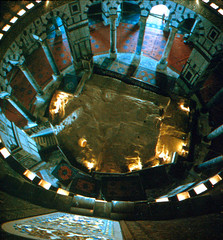
Abraham and Muhammad were here: the interior of the Dome of the Rock
Originally uploaded by trudeau.
An easy site for enjoying a timeline of Jerusalem's history: JerusalemHistory.
Historic steel sword blades: Toledo, Spain, Vs. Damascus, Syria
Research and compare the historic material on the steel blades produced in Toledo, Spain, and those hammered in Damascus, Syria. The first Toledan site I viewed claimed a high technology before the arrival of the Moors. Nonetheless, I'd like to see more evidence.
Please use at least 3 sources in your investigation.
Please use at least 3 sources in your investigation.
Independent work: pistachios and almonds
In a photo from an Israeli market we see two of the nuts associated with the Mid East, pistachios and almonds.
Pistachios grown in California originated from seed stock carefully chosen in the 1920's from trees in Iran (aka Persia), acc to the California Pistachio Commission web site. Pistachios were a royal nut in the Mid East, says the site, and are cultivated near deserts.
Almonds are associated with Egyptian and Palestinian Biblical history, acc to a history written by a California grower. Historic literature connects them with the Silk Road, so their ultimate origin probably lies in China.
Research and compare these famous products in an essay - guided by your blue sheet on essay writing.
Dates were available in my Brookshires produce section - near the almonds and pistachios - this week, so I'm enjoying them as a snack. I think you'll find them easy to enjoy.
Pistachios grown in California originated from seed stock carefully chosen in the 1920's from trees in Iran (aka Persia), acc to the California Pistachio Commission web site. Pistachios were a royal nut in the Mid East, says the site, and are cultivated near deserts.
Almonds are associated with Egyptian and Palestinian Biblical history, acc to a history written by a California grower. Historic literature connects them with the Silk Road, so their ultimate origin probably lies in China.
Research and compare these famous products in an essay - guided by your blue sheet on essay writing.
Dates were available in my Brookshires produce section - near the almonds and pistachios - this week, so I'm enjoying them as a snack. I think you'll find them easy to enjoy.
Friday, October 21, 2005
Report cards distributed Friday, Oct 21, at CMHS
Ist 9wks reports are a snapshot of your average as of Oct 14. They are a diagnostic tool. They're a wake-up call for many.
The yellow sheets were distributed at CMHS Friday - unless you have an outstanding school debt.
In this geo class you can affect your grade in several ways:
* print out these web site notes before tests to have in addition to your in-class notes.
* follow the blue sheet Essay Guidelines in all your writing.
* hand in one independent essay per week.
* attend the after-school (3:40 - 4:10) Writers' Workshop on Wednesdays.
* analyze your test results by comparing your papers - once returned - with the test printed on this web site.
* work hard this semester. For most students, most of the time, the second semester brings a certain fatigue and lowered output.
The yellow sheets were distributed at CMHS Friday - unless you have an outstanding school debt.
In this geo class you can affect your grade in several ways:
* print out these web site notes before tests to have in addition to your in-class notes.
* follow the blue sheet Essay Guidelines in all your writing.
* hand in one independent essay per week.
* attend the after-school (3:40 - 4:10) Writers' Workshop on Wednesdays.
* analyze your test results by comparing your papers - once returned - with the test printed on this web site.
* work hard this semester. For most students, most of the time, the second semester brings a certain fatigue and lowered output.
Test Five: Islam / photo: Mosque of Medina
Arabia & Islam: Open notes quiz 5
1. The term “Middle East” is relative. More appropriate is the term a) Mid East b) Middle Eastern c) Southwest Asia.
2. The chief resource of this region is a stuff that the Romans would have called “rock oil,” or “oil from the rocks.” The modern equivalent to that term is a) gasoline b) petroleum c) crude oil d) motor oil.
3. Men and animals can survive the desert because there are oases where water and shade are available. Underneath the desert sands where an oasis exists you will find . . . a) desalination facility b) pumps c) aquifer d) water tanks.
4. The Muslim month of fasting is called a) hajj b) Ramadan c) zakat.
5. Fasting takes place from a) midnight to morn b) dawn to dusk c) 30 days d) breakfast to supper.
6. There are about a) 1 billion b) 6 billion c) 10 gigabytes d) a google of Muslims worldwide, according to the Time Almanac.
7. Pakistan, Bangladesh and Indonesia are also Muslim nations. T / F
8. Morocco, Algeria and Libya are Muslim nations.
T / F
9. As a young trader Muhammad the prophet journeyed to a) Jerusalem b) Cairo c) Damascus d) Paris and became acquainted with the practices of Christians and Jews.
10. Muhammad’s revelations in the desert resulted in his recitation of the verses of the book called the a) Koran b) Torah c) Bible.
11. The leaders of Mecca opposed Muhammad’s teachings. He was preaching the doctrine of one god, or a) polytheism b) monotheism c) onegodism d) predestination and they had traditionally supported multiple gods.
12. In the heart of the Great Mosque you will find a square stone building called the a) kaaba b) black stone c) black drape d) Mecca. Set into one corner of this structure is the Islamic world’s most sacred item.
13. The pilgrimage to Mecca is called the a) hajj b) Ramadan c) zakat d) journey.
14. The commandment to make the pilgrimage once in your life is part of the a) Commandments of Abraham b) 5 Pillars of Islam c) 7 Pillars of Wisdom.
15. The European nation occupied by Muslim forces during the expnsion of the Islamic Empire was a) Portugal b) France c) Spain d) Morocco.
1c2b3c4b5b6a7t8t9a10a11b12a13a14b15c
Dome of the Rock Mosque in Jerusalem: Holy to Jews & Christians as well as Muslims
Dome of the Rock (mosque)
* built before 700 AD in Jerusalem, according to Great Architecture of the World.
* Islam's earliest monument.
* celebrates the prophet Muhammad's ascension into heaven.
* also the site where Abraham prepared to sacrifice his son, Isaac.
* built on Mount Moriah, site of the ancient Jewish temple.
* gilt dome; underneath it is the raw rock that is held holy because of these events.
* octagonal building.
Sadly, it is a site of past and potential conflict between fanatical Jews and Muslims over "ownership" of the site.
Overview of the world's Muslim Nations:
* All of SW Asia except Israel (Jewish state).
* All North Africa.
* Most of the rest of the continent of Africa (an exception: South Africa).
* Most of Central Asia, such as Pakistan and Bangladesh. India is Hindu but with a significant Muslim population.
* Some of SE Asia, including Indonesia and Singapore.
* built before 700 AD in Jerusalem, according to Great Architecture of the World.
* Islam's earliest monument.
* celebrates the prophet Muhammad's ascension into heaven.
* also the site where Abraham prepared to sacrifice his son, Isaac.
* built on Mount Moriah, site of the ancient Jewish temple.
* gilt dome; underneath it is the raw rock that is held holy because of these events.
* octagonal building.
Sadly, it is a site of past and potential conflict between fanatical Jews and Muslims over "ownership" of the site.
Overview of the world's Muslim Nations:
* All of SW Asia except Israel (Jewish state).
* All North Africa.
* Most of the rest of the continent of Africa (an exception: South Africa).
* Most of Central Asia, such as Pakistan and Bangladesh. India is Hindu but with a significant Muslim population.
* Some of SE Asia, including Indonesia and Singapore.
Wednesday, October 19, 2005
Osama bin Laden bio project due Tuesday, Oct 25
Create a timeline biography of Osama bin Laden around the following
* photo of Osama
* map of Saudi Arabia
* map of Afghanistan
* map of Pakistan
* photo of Ayman al-Zawahiri
* the late King Fahd of saudi Arabia
* 6 brief notes on the life of Osama.
* 3 sources / titling
10 pts.
Due Tues, Oct 25
complete on computer or with scissors and glue.
Vocab
ululating, to ululate: warbling, high-pitched scream of approval common to SW Asia and N Africa. Most frequently practiced by women, it is an alternative to clapping.
Independent work . . .
* Research and compare the lives of Osama and Lawrence. Do not base your Lawrence material on the movie, even though it is a fact-based work. Use an encyclopedia for Lawrence's life. You will deepend your knowledge ina smart way. Remember, such essays don't have to be elngthy to get maximum points. Follow the blue sheet on essay guidelines to your golden fate.
* Research and compare characteristics of the Damascus steel sword blade and the blade technology of Toledo, Spain.
* photo of Osama
* map of Saudi Arabia
* map of Afghanistan
* map of Pakistan
* photo of Ayman al-Zawahiri
* the late King Fahd of saudi Arabia
* 6 brief notes on the life of Osama.
* 3 sources / titling
10 pts.
Due Tues, Oct 25
complete on computer or with scissors and glue.
Vocab
ululating, to ululate: warbling, high-pitched scream of approval common to SW Asia and N Africa. Most frequently practiced by women, it is an alternative to clapping.
Independent work . . .
* Research and compare the lives of Osama and Lawrence. Do not base your Lawrence material on the movie, even though it is a fact-based work. Use an encyclopedia for Lawrence's life. You will deepend your knowledge ina smart way. Remember, such essays don't have to be elngthy to get maximum points. Follow the blue sheet on essay guidelines to your golden fate.
* Research and compare characteristics of the Damascus steel sword blade and the blade technology of Toledo, Spain.
Slightly different map of SW Asia for a hand-sketched map quiz
Sketch borders and use 15 labels as Identifications on a map of SW Asia Th, Oct 20 . . .
* Red Sea, Mediterranean, Persian Gulf, Arabian Sea
* Egypt, Israel, Lebanon, Syria, Iraq, Jordan,
Iran, Saudi Arabia, Yemen
* Jerusalem, Damascus, Cairo, Medina, Mecca, Baghdad, Tehran, Beirut
Also, have notes ready for a 15-item mult-choice quiz mostly on Islam.
Why is Aqaba, Israel, such a strategic town?
Observe the Africans in Lawrence of Arabia:
* African men are seen in the background near Prince Feisal and Sherif Ali.
* The Prophet Muhammad's inner circle included 2 African men: Mihja and Bilal ibn Ribah (an Ethiopian).
Vocab:
geology
hydrology
desalination
map of Shreveport:
* Silver Lake, once on the SW corner of downtown; the Times building is at 222 Lake St. Prevented development from moving in the direction of Stoner Hill neighborhood.
* Bayou Pierre, which runs parallel to the Red River, grew to be a significant waterway during the time the Red was clogged with the Great Raft.
* Betty Virginia Park was once a lake. The spring-fed lake was connected by bayous to the Red R. Boats once docked aside Trabue Hill.
* Changes in the park's playground might be traced to our litigious society. To litigate is to sue, or to use the courts to file a suit.
* Red Sea, Mediterranean, Persian Gulf, Arabian Sea
* Egypt, Israel, Lebanon, Syria, Iraq, Jordan,
Iran, Saudi Arabia, Yemen
* Jerusalem, Damascus, Cairo, Medina, Mecca, Baghdad, Tehran, Beirut
Also, have notes ready for a 15-item mult-choice quiz mostly on Islam.
Why is Aqaba, Israel, such a strategic town?
Observe the Africans in Lawrence of Arabia:
* African men are seen in the background near Prince Feisal and Sherif Ali.
* The Prophet Muhammad's inner circle included 2 African men: Mihja and Bilal ibn Ribah (an Ethiopian).
Vocab:
geology
hydrology
desalination
map of Shreveport:
* Silver Lake, once on the SW corner of downtown; the Times building is at 222 Lake St. Prevented development from moving in the direction of Stoner Hill neighborhood.
* Bayou Pierre, which runs parallel to the Red River, grew to be a significant waterway during the time the Red was clogged with the Great Raft.
* Betty Virginia Park was once a lake. The spring-fed lake was connected by bayous to the Red R. Boats once docked aside Trabue Hill.
* Changes in the park's playground might be traced to our litigious society. To litigate is to sue, or to use the courts to file a suit.
Tuesday, October 18, 2005
Comparing the Maps of the Roman and Islamic Empires
Last week we recognized the Golden Age of Islam. An empire was created by Muslim warriors who sped out of Arabia in the century after the Prophet Muhammad's death. The armies took Persia, Syria, Judaea, Aegyptus and continued across North Africa. In 711 AD they crossed the Strait of Gibraltar and took Espana.
This week we see the map of the Roman Empire - some 600 years earlier. The Roman Empire included quite a bit more land. It entirely encompassed the Mediterranean.
The Pax Romana was a 200-year period of peace and stability throughout the empire. It began with the wise reign of Augustus Caesar, 27 BC, and continued to 180 AD. Thus we see Jesus of Nazareth born into the Pax Romana.
By the end of the Pax Romana the new religion called Christianity was spreading rapidly - using the roads and communications afforded by the widespread empire. The growth was non-violent.
By the year 300 the Roman emperor Constantine I had converted to Christianity. By the Edict of Milan he stopped the persecution of Christians. By 390 AD Christianity was the official religion of the empire.
Constantine's mother, Helen, went to Jerusalem and investigated the life of Jesus. Over the place of his crucifixion and burial she sponsored the building of the Church of the Holy Sepulchre.
Did Islam use an older empire in its rapid growth? Yes; it spread through the decaying Byzantine Empire.
Did the Jews ever command an empire?
Do we live in an era that could be called the Pax Americana? Your teacher says yes. Historians would not see the war in Iraq as a big deal, btw. Nor would our bombing of Afghanistan or the 9/11 attacks be seen as the end of an era of widespread stability.
Vocab:
* Judaeo-Christian ethic: the philosophical background of Euro-American society (to now).
* epiphany: a mental or emotional breakthrough - such as Lawrence's plan to attack Aqaba from the desert.
* blasphemy: to curse or be irreverent about God's matters.
* date palm: palm of SW Asia that produces a fruit something like a giant raisin. During Ramadan the prophet broke his fast with dates, so they are a favorite in Muslim houses. Americans make date loaf bread and use chopped dates in fruit cakes and trail mix.
* aquifer: underground water reservoir in porous rock. Makes an oasis possible.
* Aqaba: city on the edge of the upper end of the Red Sea (Gulf of Aqaba); on the border of Israel and Jordan.
* Arabia: why was Arabia never a priority in the ancient world? Because petroleum did not become important to the world until the era of WWII. Oil is their principal resource.
Haynes Gym, Centenary College. A beautifully renovated exercise center with an olympic pool. The CMHS swim team will host competitions here on Oct 19 and Nov 2 at 7 pm. Check it out.
This week we see the map of the Roman Empire - some 600 years earlier. The Roman Empire included quite a bit more land. It entirely encompassed the Mediterranean.
The Pax Romana was a 200-year period of peace and stability throughout the empire. It began with the wise reign of Augustus Caesar, 27 BC, and continued to 180 AD. Thus we see Jesus of Nazareth born into the Pax Romana.
By the end of the Pax Romana the new religion called Christianity was spreading rapidly - using the roads and communications afforded by the widespread empire. The growth was non-violent.
By the year 300 the Roman emperor Constantine I had converted to Christianity. By the Edict of Milan he stopped the persecution of Christians. By 390 AD Christianity was the official religion of the empire.
Constantine's mother, Helen, went to Jerusalem and investigated the life of Jesus. Over the place of his crucifixion and burial she sponsored the building of the Church of the Holy Sepulchre.
Did Islam use an older empire in its rapid growth? Yes; it spread through the decaying Byzantine Empire.
Did the Jews ever command an empire?
Do we live in an era that could be called the Pax Americana? Your teacher says yes. Historians would not see the war in Iraq as a big deal, btw. Nor would our bombing of Afghanistan or the 9/11 attacks be seen as the end of an era of widespread stability.
Vocab:
* Judaeo-Christian ethic: the philosophical background of Euro-American society (to now).
* epiphany: a mental or emotional breakthrough - such as Lawrence's plan to attack Aqaba from the desert.
* blasphemy: to curse or be irreverent about God's matters.
* date palm: palm of SW Asia that produces a fruit something like a giant raisin. During Ramadan the prophet broke his fast with dates, so they are a favorite in Muslim houses. Americans make date loaf bread and use chopped dates in fruit cakes and trail mix.
* aquifer: underground water reservoir in porous rock. Makes an oasis possible.
* Aqaba: city on the edge of the upper end of the Red Sea (Gulf of Aqaba); on the border of Israel and Jordan.
* Arabia: why was Arabia never a priority in the ancient world? Because petroleum did not become important to the world until the era of WWII. Oil is their principal resource.
Haynes Gym, Centenary College. A beautifully renovated exercise center with an olympic pool. The CMHS swim team will host competitions here on Oct 19 and Nov 2 at 7 pm. Check it out.
Monday, October 17, 2005
Point sheets out Mon, Oct 17, in advance of report cards
Point sheets that bring parents and students up to date in geo class are being distributed to students today.
Th, Oct 20:
* Hand-sketched map quiz on SW Asia, Istanbul to Tehran.
* Multiple-choice, open notes quiz mostly on Islam.
Today's notes:
* the Great Mosque of Mecca:
- towering minarets, open interior.
- room for some 10,000 worshippers.
- the Kaaba is the cube-shaped building in the mosque that is the center of worship. The Kaaba is covered with a black silk drape. Silver and gold threads are used in the drape's calligraphy.
- in one corner of the Kaaba is the silver-encased Black Stone. It is a symbol for God's connection with the Arabian peoples.
- Non-Muslims are forbidden to enter the holy city.
- the Great Mosque is the center of the annual hajj, the pilgrimage to celebrate Islam and the life of Muhammad.
Vocab:
* gamal: Hebrew & Arabic for camel.
* jebel: mountain.
* wadi: dry canyon.
* aquifer: underground water deposit. Aquifers enable us to dig wells in the middle of a desert.
Th, Oct 20:
* Hand-sketched map quiz on SW Asia, Istanbul to Tehran.
* Multiple-choice, open notes quiz mostly on Islam.
Today's notes:
* the Great Mosque of Mecca:
- towering minarets, open interior.
- room for some 10,000 worshippers.
- the Kaaba is the cube-shaped building in the mosque that is the center of worship. The Kaaba is covered with a black silk drape. Silver and gold threads are used in the drape's calligraphy.
- in one corner of the Kaaba is the silver-encased Black Stone. It is a symbol for God's connection with the Arabian peoples.
- Non-Muslims are forbidden to enter the holy city.
- the Great Mosque is the center of the annual hajj, the pilgrimage to celebrate Islam and the life of Muhammad.
Vocab:
* gamal: Hebrew & Arabic for camel.
* jebel: mountain.
* wadi: dry canyon.
* aquifer: underground water deposit. Aquifers enable us to dig wells in the middle of a desert.
Sunday, October 16, 2005
Holocaust Remembrance Project Essay Contest
A documented essay of some 1,200 words will place students in the running for scholarships and a trip to Washington, DC, in the annual Holocaust Remembrance Project Essay contest.
Centenary College prof Lisa Nicoletti taught a seminar on the Holocaust during the summer of 2005 and your teacher was one of the hardworking pupils. Thus I should be of good use to you in preparing an essay for this contest.
See more at Holocaust.HKLaw.com.
Centenary College prof Lisa Nicoletti taught a seminar on the Holocaust during the summer of 2005 and your teacher was one of the hardworking pupils. Thus I should be of good use to you in preparing an essay for this contest.
See more at Holocaust.HKLaw.com.
New Orleans devastation has generated 22 million tons of garbage, says the NYTimes
The scope of the western world's largest waste problem is described here: NY Times / New Orleans Garbage.
Saturday, October 15, 2005
Test Four, for your inquiry, reflection and analysis
Test Four Geography 2005 / Trudeau
1. Race, nationality or even language may be used to define a category known as the __ group. a) shibboleth b) ethnic c) immigration d) ethical.
2. In Manhattan the earliest development on the island took place at the __ end. a) northern b) eastern c) southern d) Bronx.
3. Why do students know plenty about hieroglyphics and so little about cuneiform script? a) building materials used by the ancient Egyptians and Mesopotamians b) teachers know much about Egyptians and little about Sumerians c) Americans love Egyptian history; Babylonian history seems alien.
4. Which European group first settled New York harbor? a) British b) Dutch
c) French d) Germans.
5. What peace-minded landmark building and organization lies in midtown Manhattan on the edge of the East River? a) United Nations b) Rockefeller Center c) Metropolitan Museum.
6. Before the Europeans there were the Algonquins and Iroquois. They are the native, or __, peoples of the New York region. a) indigenous b) indigent
c) independent d) endomorphic.
7. The run-down Manhattan neighborhood in which many poor immigrants
(notably East European Jews, Italians and Chinese) got their start is the a) Upper West Side b) the Midtown area c) the Lower East Side.
8. Arabic, English, Swahili, and Dinka are languages associated with a part of
Africa. Name the nation: a) Egypt b) Kenya c) Somalia d) Sudan.
9. Which of these calendar landmarks is Jewish? a) Ramadan b) Rosh Hashanah
c) Equinox d) Dia de Los Muertos.
10. The Erie Canal directly connected the Great Lakes region to the a) Hudson valley b) New York harbor c) port of New York’s global trade.
11. One part of Louisiana that could be closely compared to the Erie Canal: a) Mississippi R. b) Atchafalaya R. c) Lake Pontchartrain d) I-49.
12. SoHo and Chelsea are parts of Manhattan that have counterparts in a) Amsterdam b) Paris c) London d) Boston.
13. Hurricanes Katrina and Rita devastated parts of the Gulf rim. The biggest immediate impact was felt in the area of a) coastal erosion b) petroleum
production c) finance and investments d) global warming.
14. Plastics, fertilizers, synthetic fibers, paint and fuel are products associated with the a) oil platform, or rig b) oil well c) refinery d) research laboratory.
15. Turbulent weather that hits the Caribbean and Gulf basins usually has begun on the coast of a) Africa b) South America c) Europe d) Asia.
Brief essay for 5 pts. ...
a) Describe and b) compare the river basins and harbor location of America’s 2 greatest ports, New York and New Orleans. Use your atlas and notes to name the rivers and describe the regions that contributed to the cities’ success in the late 19th and early 20th centuries.
The ideal essay has been posted - scroll down - and here are the answers to the mult-choice items:
1. b) ethnic group
2. c) southern end of Manhattan
3. a) Egyptians built in stone - everything else flows from this . . .
4. b) Dutch first.
5. a) UN
6. a) indigenous peoples
7. c) Lower East Side - immigrant territory to this day.
8. d) Sudan - remember the Dinka fellows, Peter and Santino?
9. b) Rosh Hashanah
10. a) Erie connects to Hudson
11. d I-49, a sadly incomplete Erie-like artery.
12. c) SoHo and Chelsea are areas in both Manhattan and London.
13. a or b) hurricanes: coastal erosion / petroleum production
14. c) plastics & fertilizers begin their life at the refinery - see diagram on this website.
15. a) Africa along the Atlantic is where we see the genesis of some of our worst weather.
Friday, October 14, 2005
Medieval Times: the extent of the Islamic empire
From Spain to Pakistan, the 8th century Muslim soldiers mounted upon camels and swift Arabian steeds conquered and administered an empire.
Students must know the extent of this map, which they sketched 10/14.
Symbols on the map were the sword-wielding warrior on camel or Arabian horse. The most significant region of their conquest was southern Europe: Espana. Muslim soldiers crossed the Strait of Gibraltar in 711 AD.
Classroom project to be completed at home and ready Mon, Oct 17:
Annotated timeline of the Monotheist religions of SW Asia
* Judaism, Christinaity, Islam
* Include symbols (menorah, crescent moon & star, cross & orb) and color.
* Brief notes, such as the 5 Pillars of Islam.
* Brief map of the Med - Persian Gulf region.
Bonus credit suggestions:
* Detailed thank you email note to Islamic guest speakers . . .
Nadine / liberality790@gmail.com
Dana / dmbader08@hotmail.com
Fatima / fetimaa@yahoo.com
Ahmad / zestyzee420@aol.com
Your points will come from telling them specifically what you learned from them.
* Research and compare the planning and execution of the Erie Canal with the advent of Islam and the creation of an Islamic empire.
Students must know the extent of this map, which they sketched 10/14.
Symbols on the map were the sword-wielding warrior on camel or Arabian horse. The most significant region of their conquest was southern Europe: Espana. Muslim soldiers crossed the Strait of Gibraltar in 711 AD.
Classroom project to be completed at home and ready Mon, Oct 17:
Annotated timeline of the Monotheist religions of SW Asia
* Judaism, Christinaity, Islam
* Include symbols (menorah, crescent moon & star, cross & orb) and color.
* Brief notes, such as the 5 Pillars of Islam.
* Brief map of the Med - Persian Gulf region.
Bonus credit suggestions:
* Detailed thank you email note to Islamic guest speakers . . .
Nadine / liberality790@gmail.com
Dana / dmbader08@hotmail.com
Fatima / fetimaa@yahoo.com
Ahmad / zestyzee420@aol.com
Your points will come from telling them specifically what you learned from them.
* Research and compare the planning and execution of the Erie Canal with the advent of Islam and the creation of an Islamic empire.
Wednesday, October 12, 2005
Ramadan: NY Times photo / richard allenby
Ramadan Ritual: Fast Daily, Pray, Head to the Mall
By HASSAN M. FATTAH
DUBAI, United Arab Emirates, Oct. 7 - The decorations are hanging, the cash registers are clanging, and the air of holiday cheer is everywhere. For a holy month, Ramadan is not what it used to be.
Once an ascetic month of fasting, prayer and reflection on God, Ramadan has gradually taken on the commercial trappings of Christmas and Hanukkah, from the hanging lights that festoon windows to the Ramadan greeting cards and Ramadan sales and advertising campaigns that have become the backbone of commerce for the month.
Marketers and businesses have caught on to the potential of 1.3 billion people at home fasting or breaking their daily fasts and getting back to normal life, a captive audience eager for entertainment and celebration, and more than willing to feast when the sun goes down.
See more at NY Times / Ramadan.
By HASSAN M. FATTAH
DUBAI, United Arab Emirates, Oct. 7 - The decorations are hanging, the cash registers are clanging, and the air of holiday cheer is everywhere. For a holy month, Ramadan is not what it used to be.
Once an ascetic month of fasting, prayer and reflection on God, Ramadan has gradually taken on the commercial trappings of Christmas and Hanukkah, from the hanging lights that festoon windows to the Ramadan greeting cards and Ramadan sales and advertising campaigns that have become the backbone of commerce for the month.
Marketers and businesses have caught on to the potential of 1.3 billion people at home fasting or breaking their daily fasts and getting back to normal life, a captive audience eager for entertainment and celebration, and more than willing to feast when the sun goes down.
See more at NY Times / Ramadan.
Salaam aleikum!
The Arabic greeting Salaam aleikum means "Peace be with you." The basic response is Aleikum salaam, or "And peace with you."
Quite similar to the Hebrew greeting Shalom aleichem.
Quite similar to the Hebrew greeting Shalom aleichem.
The basics of Islam
Islam: "submission to the will of God."
Muslim: "one who submits to the will of God."
* Spelling variation in Arabic vocabulary (Muslim, Moslem, etc): because it is difficult to translate Arabic vowels, the western world is undecided about which vowels to insert.
* fastest growing religion
* 1 billion adherents (global pop. 5 to 6 billion)
* 2nd largest religion, after Christianity.
* ex: US Army accomodates US soldiers who are Muslim; that group may be as large as 10,000 soldiers, according to The Nation.
While many Muslims in Persian Gulf nations and SE Asia are poor and poorly educated, American Muslims are often people of high educational achievement.
Timeline:
Abraham, 2000 BC Father of the Jews. Also Father of the Muslims.
Jesus of Nazareth: 1 AD
Muhammad: 600 AD, prophet of Islam.
Jerusalem, a city of 3 holy days each week. Friday the Muslims go to mosque for prayers. Saturday the Jews have shabbat (rest). Sunday, of course, is the Christian sabbath.
5 Pillars of Islam
* State your belief in God.
* Prayer: 5 times a day. Facing Mecca.
* Alms for the poor. Given through the mosque, which is a community center as well as worship center.
* Fasting during the month of Ramadan, from dawn to dusk. Muslims use a lunar calendar rather than the Gregorian calendar, which is essentially solar.
* Pilgrimage to Mecca, the hajj, at least once in your life.
Life of Muhammad
* 570 AD; born in Mecca and soon orphaned. raised by his uncle.
* A holy fellow.
* Works in caravans, traveling to Jerusalem and other trading centers.
* Marries Khadijah, a widow who is older than himself. Khadijah owns the caravan company.
* At age 40 he is on a retreat in a desert cave. The archangel Gabriel appears to him and begins reciting teachings that become the text of the Koran (Qu'ran).
* The Meccans resist Muhammad's preaching. His theme is monotheism, belief in one god. Monotheism is not welcomed by Meccans because their city makes money from the pilgrims who visit to venerate the many ancient gods of the Arabian peninsula.
* Eventually Muhammad is forced out of Mecca. His escape, the hejira, is used as the start of the Islamic calendar.
* His exile is spent in Medina. When he returns to Mecca, it is with the aid of an army raised among the Medinans.
* Meccans are forced to accept Islam.
* The prophet dies at an old age in Medina.
Muslim: "one who submits to the will of God."
* Spelling variation in Arabic vocabulary (Muslim, Moslem, etc): because it is difficult to translate Arabic vowels, the western world is undecided about which vowels to insert.
* fastest growing religion
* 1 billion adherents (global pop. 5 to 6 billion)
* 2nd largest religion, after Christianity.
* ex: US Army accomodates US soldiers who are Muslim; that group may be as large as 10,000 soldiers, according to The Nation.
While many Muslims in Persian Gulf nations and SE Asia are poor and poorly educated, American Muslims are often people of high educational achievement.
Timeline:
Abraham, 2000 BC Father of the Jews. Also Father of the Muslims.
Jesus of Nazareth: 1 AD
Muhammad: 600 AD, prophet of Islam.
Jerusalem, a city of 3 holy days each week. Friday the Muslims go to mosque for prayers. Saturday the Jews have shabbat (rest). Sunday, of course, is the Christian sabbath.
5 Pillars of Islam
* State your belief in God.
* Prayer: 5 times a day. Facing Mecca.
* Alms for the poor. Given through the mosque, which is a community center as well as worship center.
* Fasting during the month of Ramadan, from dawn to dusk. Muslims use a lunar calendar rather than the Gregorian calendar, which is essentially solar.
* Pilgrimage to Mecca, the hajj, at least once in your life.
Life of Muhammad
* 570 AD; born in Mecca and soon orphaned. raised by his uncle.
* A holy fellow.
* Works in caravans, traveling to Jerusalem and other trading centers.
* Marries Khadijah, a widow who is older than himself. Khadijah owns the caravan company.
* At age 40 he is on a retreat in a desert cave. The archangel Gabriel appears to him and begins reciting teachings that become the text of the Koran (Qu'ran).
* The Meccans resist Muhammad's preaching. His theme is monotheism, belief in one god. Monotheism is not welcomed by Meccans because their city makes money from the pilgrims who visit to venerate the many ancient gods of the Arabian peninsula.
* Eventually Muhammad is forced out of Mecca. His escape, the hejira, is used as the start of the Islamic calendar.
* His exile is spent in Medina. When he returns to Mecca, it is with the aid of an army raised among the Medinans.
* Meccans are forced to accept Islam.
* The prophet dies at an old age in Medina.
Tuesday, October 11, 2005
Bio and setting: the life of TE Lawrence
Thomas Lawrence was born in Oxford and raised by a father who would not marry his mother, who was formerly the family's governess. They lived peaceably as man and wife, but in conservative England this non-marriage was a difficult issue for a boy. Lawrence was, I hate to say it, a bastard.
Lawrence escaped his problems through scholarship and exercise. He became a student historian, specializing in the castles built during the Crusades. He learned French and the very difficult Arabic language.
Bicycling for hours, doing pushups and depriving himself of food and sleep were ways in which he endeavored to increase his endurance and strength.
He was also a talented writer and his book Seven Pillars of Wisdom is still read some 70 years after his death. In fact, I'll read some of it to you in class.
"Lawrence of Arabia" is an award-winning, classic film. One of its outstanding points is the vivid footage of the Arabian desert.
World War I, 1914 - 1918, is when Lawrence won his fame.
WWI marked the opening of the modern era (examples):
* chemical warfare ("mustard gas")
* modern machine gun
* airplanes
* armored tanks
WWI
* England & France & allies Vs. Germany (whose allies included Turkey)
* In the Mid East, England controlled Egypt and Turkey was Germany's ally. The Turks controlled Arabia and most of the Mid East.
WWI
* The US entered the war in 1917. The isolationist spirit of America kept us out of the war for 3 years.
Teacher's thesis:
That the events of WWI as described in Lawrence of Arabia were part of the misunderstandings and frustrations that led to the founding of Arab-based, Muslim extremist groups such as al qaeda and led to the destruction of the WTC on 9-11, 2001.
Lawrence escaped his problems through scholarship and exercise. He became a student historian, specializing in the castles built during the Crusades. He learned French and the very difficult Arabic language.
Bicycling for hours, doing pushups and depriving himself of food and sleep were ways in which he endeavored to increase his endurance and strength.
He was also a talented writer and his book Seven Pillars of Wisdom is still read some 70 years after his death. In fact, I'll read some of it to you in class.
"Lawrence of Arabia" is an award-winning, classic film. One of its outstanding points is the vivid footage of the Arabian desert.
World War I, 1914 - 1918, is when Lawrence won his fame.
WWI marked the opening of the modern era (examples):
* chemical warfare ("mustard gas")
* modern machine gun
* airplanes
* armored tanks
WWI
* England & France & allies Vs. Germany (whose allies included Turkey)
* In the Mid East, England controlled Egypt and Turkey was Germany's ally. The Turks controlled Arabia and most of the Mid East.
WWI
* The US entered the war in 1917. The isolationist spirit of America kept us out of the war for 3 years.
Teacher's thesis:
That the events of WWI as described in Lawrence of Arabia were part of the misunderstandings and frustrations that led to the founding of Arab-based, Muslim extremist groups such as al qaeda and led to the destruction of the WTC on 9-11, 2001.
Comparing the importance of New Yorks' and New Orleans' river basins and harbors
On the test Tuesday, Oct 11, was this essay question:
New Orleans / NYC comparison essay
The instructions were, “Describe and compare the river basins and harbor location of America’s 2 greatest ports, NYC and NO. Use your atlas and notes to name the rivers and describe the regions that contributed to these cities’ success in the late 19th and early 20th centuries.” On the board I wrote “See maps a) NYC: Hudson, Erie Canal, Great lakes. b) Mississippi Valley. My answer is below.
Imagine barges loaded with furs, fish and timber as well as barrels filled with minerals. Is that barge headed down the Mississippi to the port of New Orleans or down the Hudson to NYC? Both are possible.
In the early 1800’s the city of NO was booming from the immense amounts of cargo that came from the Ohio River valley, the Tennessee River, from the Missouri valley and the Arkansas River valley. Some 10 states were connected by major rivers to the Mississippi. In New Orleans ships were waiting to take some of these goods acroiss the oceans.
In the early 1800’s the state of New York built the Erie Canal, a 400-mile waterway that connected the Great lakes with the Hudson valley. An enormous amount of trade in fish, meat, fur, timber and minerals began to funnel toward NYC. Thus New York supplied tons of goods to the international array of ships in the NYC harbor.
Eventually NYC became America’s largest port and NO was number two. Was it because the Great Lakes and Hudson delivered more riches than the Mississippi valley? Was it because NY harbor is closer to the US trading partners in Europe? In both cases we at least see the source of America’s material success in the 1800’s and early 1900’s.
New Orleans / NYC comparison essay
The instructions were, “Describe and compare the river basins and harbor location of America’s 2 greatest ports, NYC and NO. Use your atlas and notes to name the rivers and describe the regions that contributed to these cities’ success in the late 19th and early 20th centuries.” On the board I wrote “See maps a) NYC: Hudson, Erie Canal, Great lakes. b) Mississippi Valley. My answer is below.
Imagine barges loaded with furs, fish and timber as well as barrels filled with minerals. Is that barge headed down the Mississippi to the port of New Orleans or down the Hudson to NYC? Both are possible.
In the early 1800’s the city of NO was booming from the immense amounts of cargo that came from the Ohio River valley, the Tennessee River, from the Missouri valley and the Arkansas River valley. Some 10 states were connected by major rivers to the Mississippi. In New Orleans ships were waiting to take some of these goods acroiss the oceans.
In the early 1800’s the state of New York built the Erie Canal, a 400-mile waterway that connected the Great lakes with the Hudson valley. An enormous amount of trade in fish, meat, fur, timber and minerals began to funnel toward NYC. Thus New York supplied tons of goods to the international array of ships in the NYC harbor.
Eventually NYC became America’s largest port and NO was number two. Was it because the Great Lakes and Hudson delivered more riches than the Mississippi valley? Was it because NY harbor is closer to the US trading partners in Europe? In both cases we at least see the source of America’s material success in the 1800’s and early 1900’s.
Pakistani earthquake: perspective on our recent woes
Pakistan is a nation that was created from the ancient land of India. Pakistan and Bangladesh - on the east side of India - were created as Muslim havens from the Hindu-Muslim strife perennial in India.
Today there are many people of Pakistani birth and descent who have made Shreveport their home.
The recent Pakistani earthquake has produced a death toll of over 20,000. That offers us a global prespective on the Katrina disaster.
Today there are many people of Pakistani birth and descent who have made Shreveport their home.
The recent Pakistani earthquake has produced a death toll of over 20,000. That offers us a global prespective on the Katrina disaster.
TE Lawrence, aka Lawrence of Arabia: an inspiring and unusual biography that ties Europe and the Middle East
This week we begin to use the classic movie "Lawrence of Arabia" as a framework for a study of the Middle East, or SW Asia.
The last chapter of Lawrence's life was lived quietly, as a successful writer, in this house in the south of England. But he won fame in fighting wildly alongside Arabian forces in WWI in the deserts of the Mid East.
The last chapter of Lawrence's life was lived quietly, as a successful writer, in this house in the south of England. But he won fame in fighting wildly alongside Arabian forces in WWI in the deserts of the Mid East.
Creating a timeline of religions born in SW Asia
Judaism, Christianity and Islam: all were born near each other between the Mediterranean and Persian Gulf. World Geography, the textbook, gives us enough material to begin our timeline exploration.
The illustration is of a menorah, symbol of Jewish life.
The illustration is of a menorah, symbol of Jewish life.
Monday, October 10, 2005
Columbus Day: the impact of the wacky Italian and his 4 voyages
World Book's latest edition says this about our erstwhile hero, known in Spain as Cristobal Colon:
Recent research into the life and times of Christopher Columbus has somewhat diminished his heroic image as an isolated visionary by placing him in the context of a broad wave of exploration. Historians continue to praise his persistence, courage, and maritime ability. Critics point to his cruelty to the Indians, his poor administration of Hispaniola, and his role in beginning the heedless exploitation of the natural resources of the Americas. Columbus's explorations ended centuries of mutual ignorance about what lay on either side of the Atlantic Ocean. To him belong both the glory of the encounter and a share of the blame for what followed.
One of the Columbus factors I enjoy considering:
The Americas provided foods that became popular throughout the world. These foods included cassava, cayenne, chocolate, hot peppers, paprika, peanuts, sweet potatoes, tomatoes, and white potatoes. Europe and Asia, in exchange, supplied the Americas with cattle, goats, honey bees, horses, pigs, rice, sheep, wheat, and many trees and other plants.
World Book also sees this big picture:
Many exchanges took place between the Eastern and Western hemispheres as a result of Columbus's voyages. The Europeans grew important cash crops-cotton, rubber, and sugar cane-in the Americas. They established vast plantations worked by Indians and by imported African slaves. They also obtained furs and precious metals. These valuable resources created fortunes for the Dutch, English, French, Portuguese, Russians, and Spanish. The wealth and human resources of the Western Hemisphere gave these countries a huge advantage over the rest of the world in later centuries.
* Columbus' home nation? Italy
* Columbus' adopted nation? Spain
* Location of his first landfall in the New World: a) Bahamas b) Florida c) Puerto Rico d) Jamaica.
answer: Bahamas, San Salvador Island.
Fourteen year-olds can write? One of the best chronicles of Columbus' voyages was written by his son Diego, age 14, who accompanied his dad on the fourth crossing, says WB.
Diego's chronicle is coinsidered a Primary Document. It is writing by a person who experienced the incident. Another example of a primary source: a journal or a ship's log. To read the Diego Columbus primary document I would have to know Spanish, learn ancient Spanish and travel to Madrid to read the parchment.
In our class we deal with secondary documents. These are works written about the incident by a journalist or historian who gathered the material from people who witnessed the incidents.
Independent work: research and compare the bios of Columbus and Albert Einstein.
Recent research into the life and times of Christopher Columbus has somewhat diminished his heroic image as an isolated visionary by placing him in the context of a broad wave of exploration. Historians continue to praise his persistence, courage, and maritime ability. Critics point to his cruelty to the Indians, his poor administration of Hispaniola, and his role in beginning the heedless exploitation of the natural resources of the Americas. Columbus's explorations ended centuries of mutual ignorance about what lay on either side of the Atlantic Ocean. To him belong both the glory of the encounter and a share of the blame for what followed.
One of the Columbus factors I enjoy considering:
The Americas provided foods that became popular throughout the world. These foods included cassava, cayenne, chocolate, hot peppers, paprika, peanuts, sweet potatoes, tomatoes, and white potatoes. Europe and Asia, in exchange, supplied the Americas with cattle, goats, honey bees, horses, pigs, rice, sheep, wheat, and many trees and other plants.
World Book also sees this big picture:
Many exchanges took place between the Eastern and Western hemispheres as a result of Columbus's voyages. The Europeans grew important cash crops-cotton, rubber, and sugar cane-in the Americas. They established vast plantations worked by Indians and by imported African slaves. They also obtained furs and precious metals. These valuable resources created fortunes for the Dutch, English, French, Portuguese, Russians, and Spanish. The wealth and human resources of the Western Hemisphere gave these countries a huge advantage over the rest of the world in later centuries.
* Columbus' home nation? Italy
* Columbus' adopted nation? Spain
* Location of his first landfall in the New World: a) Bahamas b) Florida c) Puerto Rico d) Jamaica.
answer: Bahamas, San Salvador Island.
Fourteen year-olds can write? One of the best chronicles of Columbus' voyages was written by his son Diego, age 14, who accompanied his dad on the fourth crossing, says WB.
Diego's chronicle is coinsidered a Primary Document. It is writing by a person who experienced the incident. Another example of a primary source: a journal or a ship's log. To read the Diego Columbus primary document I would have to know Spanish, learn ancient Spanish and travel to Madrid to read the parchment.
In our class we deal with secondary documents. These are works written about the incident by a journalist or historian who gathered the material from people who witnessed the incidents.
Independent work: research and compare the bios of Columbus and Albert Einstein.
Saturday, October 08, 2005
NY Times on the New Orleans levee failure
For background on the failure of New orleans' levees please see NYTimes/LeveeFailure.
If you aren't registered with the NY Times, I can tell you that it's painless, takes only a moment and gives you access to some worthy stories. You might try it.
If you aren't registered with the NY Times, I can tell you that it's painless, takes only a moment and gives you access to some worthy stories. You might try it.
Potemkin village: a nice architectural facade with nothing behind it
Potemkin village \puh-TEM(P)-kin\, noun:
An impressive facade or display that hides an undesirable fact or state; a false front.
When will the West have the guts to call Russia what it really is: a semi-totalitarian state with Potemkin village-style democratic institutions and a fascist-capitalist economy?
--"Western Investors Defend a Potemkin Village," Moscow Times, January 9, 2004
It's a lie, a huge Potemkin village designed to give North Korea the appearance of modernity.
--Kevin Sullivan, "Borderline Absurdity," Washington Post, January 11, 1998
Unless U.S. imperial overstretch is acknowledged and corrected, the United States may someday soon find that it has become a Potemkin village superpower -- with a facade of military strength concealing a core of economic weakness.
--Christopher Layne, "Why the Gulf War Was Not in the National Interest," The Atlantic, July 1991
A Potemkin village is so called after Grigori Aleksandrovich Potemkin, who had elaborate fake villages built in order to impress Catherine the Great on her tours of the Ukraine and the Crimea in the 18th century.
Friday, October 07, 2005
Nine weeks test Tuesday, Oct 11, based on web pages dating from Sept 26
The last test of the nine weeks puts the focus on class web site notes and on analytical reading. There will be 20 multiple-choice questions - covering material from Sept 26 through October 9 - and an essay question callinf for a comparison between New Orleans and New York.
Next week we return to SW Asia to study a potent and growing world force: Islam. A parallel study is petroleum and its production. And we'll be watching a classic movie to add body the story: Lawrence of Arabia.
The illustration focuses on minarets, an architectural symbol for Islam. The call to prayer customarily emanates from a muezzin, a prayer leader who broadcasts the prayers from the minaret.
“Imagine 20 years of this,” NY Times, 9-25-05, Donald McNeil
1. icon
2. portent
3. harbinger
4. cartouche
5. oscillates
6. meteorological
7. sloth
8. ephemeral
9. infrastructure
10. deficit
a) basic facilities, services, and installations needed for the functioning of a community or society
b) warning sign, or omen.
c) symbol of what’s coming.
d) to rapidly move back and forth.
e) loss or debit.
f) an oblong symbol of a pharaoh.
g) image.
h) a short-lived thing.
i) having to do with the atmosphere.
j) laziness.
1) “Squalls can be tracked from their birth off the coast of Africa.” This is because a) widespread and violent conflict in Africa results in storms. b) Africa is a continent with few natural harbors. c) Africa is connected to North America and the Gulf of Mexico via wind and ocean currents.
2) “Marshes that once absorbed storms have been allowed to die off and sink.”
a) due to oil production b) due to levees along the mighty Mississippi c) due to digging of erosive ship channels. d) due to inadequate political leadership.
3) Most US refineries are located around the Gulf rim because a) that’s where all the oil is located. b) tourism advocates and environmentalists in the Pacific region and Appalachians have opposed oil facilities.
4) A cycle of severe storms may affect * investment in infrastructure improvements * investment in exploration of new technology * your economic future because the investment monies will be spent on a) terrorism protection b) debates over taxation c) hospitals and nursing homes d) storm repair.
5) Trucking, airlines, oil and __ companies have been negatively affected by the storm impact.
a) insurance b) construction c) sanitation d) meteorological.
answers:
1. icon - image
2. portent - symbol of what lies ahead
3. harbinger - something that foretells the future
4. cartouche - identifies a pharaoh
5. oscillates - vibrates
6. meteorological - referring to the atmosphere
7. sloth - laziness
8. ephemeral - vanishing quickly
9. infrastructure - basic services and facilities
10. deficit - debit
1. See the Atlantic map for the currents that connect Africa's coast with the Caribbean and Gulf.
2. Oil production; the key word is "sink," which implies subsidence and oil extraction.
3. Environmentalists and tourism advocates often oppose drilling - in many regions away from the Gulf.
4. Storm repair.
5. Insurance. We will all pay the cost through higher insurance rates.
Next week we return to SW Asia to study a potent and growing world force: Islam. A parallel study is petroleum and its production. And we'll be watching a classic movie to add body the story: Lawrence of Arabia.
The illustration focuses on minarets, an architectural symbol for Islam. The call to prayer customarily emanates from a muezzin, a prayer leader who broadcasts the prayers from the minaret.
“Imagine 20 years of this,” NY Times, 9-25-05, Donald McNeil
1. icon
2. portent
3. harbinger
4. cartouche
5. oscillates
6. meteorological
7. sloth
8. ephemeral
9. infrastructure
10. deficit
a) basic facilities, services, and installations needed for the functioning of a community or society
b) warning sign, or omen.
c) symbol of what’s coming.
d) to rapidly move back and forth.
e) loss or debit.
f) an oblong symbol of a pharaoh.
g) image.
h) a short-lived thing.
i) having to do with the atmosphere.
j) laziness.
1) “Squalls can be tracked from their birth off the coast of Africa.” This is because a) widespread and violent conflict in Africa results in storms. b) Africa is a continent with few natural harbors. c) Africa is connected to North America and the Gulf of Mexico via wind and ocean currents.
2) “Marshes that once absorbed storms have been allowed to die off and sink.”
a) due to oil production b) due to levees along the mighty Mississippi c) due to digging of erosive ship channels. d) due to inadequate political leadership.
3) Most US refineries are located around the Gulf rim because a) that’s where all the oil is located. b) tourism advocates and environmentalists in the Pacific region and Appalachians have opposed oil facilities.
4) A cycle of severe storms may affect * investment in infrastructure improvements * investment in exploration of new technology * your economic future because the investment monies will be spent on a) terrorism protection b) debates over taxation c) hospitals and nursing homes d) storm repair.
5) Trucking, airlines, oil and __ companies have been negatively affected by the storm impact.
a) insurance b) construction c) sanitation d) meteorological.
answers:
1. icon - image
2. portent - symbol of what lies ahead
3. harbinger - something that foretells the future
4. cartouche - identifies a pharaoh
5. oscillates - vibrates
6. meteorological - referring to the atmosphere
7. sloth - laziness
8. ephemeral - vanishing quickly
9. infrastructure - basic services and facilities
10. deficit - debit
1. See the Atlantic map for the currents that connect Africa's coast with the Caribbean and Gulf.
2. Oil production; the key word is "sink," which implies subsidence and oil extraction.
3. Environmentalists and tourism advocates often oppose drilling - in many regions away from the Gulf.
4. Storm repair.
5. Insurance. We will all pay the cost through higher insurance rates.
Thursday, October 06, 2005
Graphic: the Refinery Process
A refinery is a facility designed to convert crude oil into refined products, according to the Office of Pipeline Safety (OPS) within the U. S. Department of Transportation, Pipeline and Hazardous Materials Safety Administration.
Quick Facts:
The first refinery in the United States was built in 1876 near Pico Canyon, CA. The refinery boiled oil to produce kerosene, lubricants, and waxes. Gasoline was a by product that was discarded.
With the introduction of the gasoline powered automobile in 1892, gasoline was in demand.
Refineries in the United States in 2003 processed an average 15.3 million barrels of crude oil per day from which 8.5 million barrels of gasoline was produced.
Other by products of the refining process are jet fuel, kerosene, propane, diesel fuel, and home heating oil.
Refinery products are also used to make plastics, fertilizers, synthetic fibers, paint, and other everyday products.
Quick Facts:
The first refinery in the United States was built in 1876 near Pico Canyon, CA. The refinery boiled oil to produce kerosene, lubricants, and waxes. Gasoline was a by product that was discarded.
With the introduction of the gasoline powered automobile in 1892, gasoline was in demand.
Refineries in the United States in 2003 processed an average 15.3 million barrels of crude oil per day from which 8.5 million barrels of gasoline was produced.
Other by products of the refining process are jet fuel, kerosene, propane, diesel fuel, and home heating oil.
Refinery products are also used to make plastics, fertilizers, synthetic fibers, paint, and other everyday products.
Refineries and Louisiana and the US
Here's a site explaining the functions of refineries to deepen our oil studies: PipelineFactSheet.
Storms and the US economy
After the hand-drawn map quiz on NYC today, students are reading and taking icon-based notes on the NY Times storm overview article, "Imagine 20 years of this."
They are learning to take notes on an article - so as to understand and absorb the article - by using graphics and brief phrases.
Among the items they are to add to a map of the Gulf rim:
* hot Gulf water and a storm cycle that encompasses decades.
* marshes eroded and sunken.
* Gulf oil pipelines vulnerable to oil spills.
* Oil platforms / rigs, which are pumping stations, are damaged by mega storms.
* Oil refineries (land-based factories which process crude oil into gasoline, diesel and plastics) are slowed by storms.
* Trucking is hampered by spikes in gas prices.
* Airlines are stressed by high fuel prices.
* One third of the US oil & natural gas supplies are associated with the Gulf.
* Investments in the future of the US (and Louisiana) are limited by the enormous bill to be paid in repairing storm damages. Will the modern version of the wealth-providing Erie Canal be built by the US while it is bearing the estimated $200 billion debt for the storms of 2005?
* Finally, we learned from Channel One that the background of these super storms is cloudy: scientists don't agree on the blame due to
a) global warming
b) normal cycles of high storm activity.
They are learning to take notes on an article - so as to understand and absorb the article - by using graphics and brief phrases.
Among the items they are to add to a map of the Gulf rim:
* hot Gulf water and a storm cycle that encompasses decades.
* marshes eroded and sunken.
* Gulf oil pipelines vulnerable to oil spills.
* Oil platforms / rigs, which are pumping stations, are damaged by mega storms.
* Oil refineries (land-based factories which process crude oil into gasoline, diesel and plastics) are slowed by storms.
* Trucking is hampered by spikes in gas prices.
* Airlines are stressed by high fuel prices.
* One third of the US oil & natural gas supplies are associated with the Gulf.
* Investments in the future of the US (and Louisiana) are limited by the enormous bill to be paid in repairing storm damages. Will the modern version of the wealth-providing Erie Canal be built by the US while it is bearing the estimated $200 billion debt for the storms of 2005?
* Finally, we learned from Channel One that the background of these super storms is cloudy: scientists don't agree on the blame due to
a) global warming
b) normal cycles of high storm activity.
Wednesday, October 05, 2005
IranianMihrab / The Metropolitan Museum
The Metropolitan Museum of Art, NYC, is one of the world's great institutions. Located on the edge of Central Park at Fifth Avenue and 82nd Sts, the Met also shares its images online at metmuseum.org.
Fashionable Lower Manhattan: SoHo, Tribeca and Greenwich Village
Lower Manhattan is a historic and now ritzy part of NYC. It includes historic areas that were long dilapidated: SoHo and Tribeca were warehouse and manufacturing districts that somehow escaped being destroyed when they were abanadoned during the post-war years.
When artists began to rent the lofts of SoHo (which refers to South of Houston St) in the 1960's the large spaces were cheap. Artists were followed, in the 1980s, by trendy young residents, boutiques, restaurants and galleries.
Battery Park was the site of the cannon batteries which protected the colony from invasions in the 1700's and early 1800's. Today it is a beautiful park and terminus for the Staten Is. ferry.
The Lower East Side remains an area for struggling immigrants. While most of today's immigrants are Chinese, according to the New Yorler, once the Italians and Jewish Russians dominated the area.
Two parts of NYC that got names from London: SoHo and Chelsea.
When artists began to rent the lofts of SoHo (which refers to South of Houston St) in the 1960's the large spaces were cheap. Artists were followed, in the 1980s, by trendy young residents, boutiques, restaurants and galleries.
Battery Park was the site of the cannon batteries which protected the colony from invasions in the 1700's and early 1800's. Today it is a beautiful park and terminus for the Staten Is. ferry.
The Lower East Side remains an area for struggling immigrants. While most of today's immigrants are Chinese, according to the New Yorler, once the Italians and Jewish Russians dominated the area.
Two parts of NYC that got names from London: SoHo and Chelsea.
Tuesday, October 04, 2005
The Erie Canal was like a bridge to China for the New Yorkers of the early 1800's
Today we have what might be called a digital bridge to China, speeding goods across the Pacific to the US.
In the early 1800's the state of New York gambled on a huge project; they invested in the manual excavation of the almost-400-mile Erie Canal. It made a link between NYC and the enormously rich Great Lakes region. The place that benefited the most was the port of NYC. It was almost like having a bridge to China.
Compare that to Louisiana. Our state is crossed by I-20 in the north and I-10 in the south. But I-49 is incomplete. It has been stalled in its northward connection by the Bayou State's pitiful lack of leadership. Thus Shreveport loses the jobs and wealth that is created when people can freely transport goods and trade at a crossroads.
It's as though the lesson of the Erie Canal was never taught in our schools.
In the early 1800's the state of New York gambled on a huge project; they invested in the manual excavation of the almost-400-mile Erie Canal. It made a link between NYC and the enormously rich Great Lakes region. The place that benefited the most was the port of NYC. It was almost like having a bridge to China.
Compare that to Louisiana. Our state is crossed by I-20 in the north and I-10 in the south. But I-49 is incomplete. It has been stalled in its northward connection by the Bayou State's pitiful lack of leadership. Thus Shreveport loses the jobs and wealth that is created when people can freely transport goods and trade at a crossroads.
It's as though the lesson of the Erie Canal was never taught in our schools.
Landforms of New York state: the Hudson Valley and route of the Erie Canal
The source of much of NYC's wealth is the enormously productive Hudson valley (apples, grapes, iron and hearty men) and the Erie Canal waterway, a connection to the Great Lakes.
Thus today we sketched a map of the Empire State with an emphasis on the Hudson, Erie Canal and Lakes Ontario and Erie. Illustration? The Erie Canal barge.
This question arose: "Gotham. Does it relate to Gothic?"
The definition of Gothic includes
* architecture - the thorny-pointy medieval cathedrals
* art - the medieval, non-classical styles
* fiction - dealing with mystery, extreme meotion, the unconscious
* and the Germanic tribe called the Goths - reputed as uncouth and barbarous.
Finally, the class recognized the start of the Islamic month of Ramadan and the observance of the Jewish New year, Rosh Hashanah.
* Ramadan is some 30 days of fasting - dawn to sunset - and abstinence from ordinary pleasures. It is a month of purufucation and joy through sacrifice.
* Rosh Hashanah is a 2-day period of fasting and introspection. Please see the Shreveport Times story in Monday's paper.
Thus today we sketched a map of the Empire State with an emphasis on the Hudson, Erie Canal and Lakes Ontario and Erie. Illustration? The Erie Canal barge.
This question arose: "Gotham. Does it relate to Gothic?"
The definition of Gothic includes
* architecture - the thorny-pointy medieval cathedrals
* art - the medieval, non-classical styles
* fiction - dealing with mystery, extreme meotion, the unconscious
* and the Germanic tribe called the Goths - reputed as uncouth and barbarous.
Finally, the class recognized the start of the Islamic month of Ramadan and the observance of the Jewish New year, Rosh Hashanah.
* Ramadan is some 30 days of fasting - dawn to sunset - and abstinence from ordinary pleasures. It is a month of purufucation and joy through sacrifice.
* Rosh Hashanah is a 2-day period of fasting and introspection. Please see the Shreveport Times story in Monday's paper.
Monday, October 03, 2005
NYC unit, week of Oct 3: presentations, map, comparisons
Thursday, Oct 6, hand-sketched map quiz (20 pts):
* 15 identifications (see earlier post or your notebook)
* basic borders between the islands.
Brief essay comparing NYC and New Orleans.
Digital presentations on NYC topics are worth 15 pts. Late fee: 2 pts.
They were largely created last week in the library in duos. Students were to complete them at home, at the nerighborhood library or in the library at lunch. By the way, families without a copy of Powerpoint on their computers should strongly consider getting it. I've found Ppt 2003 on Amazon.com for $112 and on eBay.com for $80. There's no particular reason to get the latest version, I've read.
Guidelines for presentations -
* Voice at an adequate volume.
* Diction and grammar.
* Look at the audience, not at the monitor screen. Use notes. But be enthusiastic.
* The printed material on the screen is brief. In your remarks, add detail and expand upon your topic.
Guidelines for presentation assembly -
* info delivered in brief phrases (max of 3 bulleted items).
* photo in background of each slide.
* effective contrast, font and size of type.
* comparison slide.
* bibliography slide (at least 2 sources for print material, one for photos).
* title slide should include facts.
Human migration is spotlighted by NYC and Ellis Island. We will examine patterns of immigration via NYC history.
History-based comparison of NYC to New Orleans:
* date of founding
* resources
* ethnic cultures
* early development
* problems
* economic pillars
* cultural development
Wed after school: Writers' Workshop in C-4 from 3:40m to 4:10. Small group attention. Bonus points to be earned!
Bonus topics this week:
* Research and compare the history of Harlem and Manhattan's Lower East Side.
* Research and compare the construction of Rockefeller Center and the WTC.
* Research and compare the Manhattan neighborhoods SoHo and Greenwich Village.
trudeau@earthlink.net
October was the eighth month under an early calendar. A revised calendar about 1500 AD moved October to the tenth month. The calendars? a) Gregorian b) Julian c) Olympian.
* 15 identifications (see earlier post or your notebook)
* basic borders between the islands.
Brief essay comparing NYC and New Orleans.
Digital presentations on NYC topics are worth 15 pts. Late fee: 2 pts.
They were largely created last week in the library in duos. Students were to complete them at home, at the nerighborhood library or in the library at lunch. By the way, families without a copy of Powerpoint on their computers should strongly consider getting it. I've found Ppt 2003 on Amazon.com for $112 and on eBay.com for $80. There's no particular reason to get the latest version, I've read.
Guidelines for presentations -
* Voice at an adequate volume.
* Diction and grammar.
* Look at the audience, not at the monitor screen. Use notes. But be enthusiastic.
* The printed material on the screen is brief. In your remarks, add detail and expand upon your topic.
Guidelines for presentation assembly -
* info delivered in brief phrases (max of 3 bulleted items).
* photo in background of each slide.
* effective contrast, font and size of type.
* comparison slide.
* bibliography slide (at least 2 sources for print material, one for photos).
* title slide should include facts.
Human migration is spotlighted by NYC and Ellis Island. We will examine patterns of immigration via NYC history.
History-based comparison of NYC to New Orleans:
* date of founding
* resources
* ethnic cultures
* early development
* problems
* economic pillars
* cultural development
Wed after school: Writers' Workshop in C-4 from 3:40m to 4:10. Small group attention. Bonus points to be earned!
Bonus topics this week:
* Research and compare the history of Harlem and Manhattan's Lower East Side.
* Research and compare the construction of Rockefeller Center and the WTC.
* Research and compare the Manhattan neighborhoods SoHo and Greenwich Village.
trudeau@earthlink.net
October was the eighth month under an early calendar. A revised calendar about 1500 AD moved October to the tenth month. The calendars? a) Gregorian b) Julian c) Olympian.
Sunday, October 02, 2005
New York landmarks review - fun for all ages
NYC map inquiry
1. Identify the 2 states that border New York.
2. Name the capital of New York.
3. Four of the boroughs are located on islands. Name the two that share space on one island.
4. Which one of these is a notable Manhattan neighborhood? a) Roxbury b) Crown Heights c) Watts d) Harlem e) all the above.
5. Name the avenue famous for swank stores and bling bling. That would be a) Central Park West b) Madison Ave. c) Fifth Ave. d) Broadway.
6. On the Upper West Side is a complex of music schools (Juilliard) and concert halls (Avery Fisher Hall). It is called a) the Rotunda b) Walt Disney Concert Center c) Lincoln Center d) John Kennedy Center for the Performing Arts.
7. This multi-skyscraper complex was built near the end of the Depression by a scion of America’s wealthiest family. It is the a) Gates Pavilion b) Trump Towers c) Rockefeller Center d) Chrysler Building.
8. Broadway at 42nd Street. This triangular plaza was once the site of the offices of NYC’s best-known newspaper. The spot is called __ __.
9. This charming historic district is NYC’s oldest residential neighborhood. It was named for the city near London in which the Prime Meridian was established. It is __ Village
10. The run-down Manhattan neighborhood in which many poor immigrants (notably East European Jews, Italians and Chinese) got their start is the a) Upper West Side b) the Midtown area
c) the Lower East Side.
11. This famous site is near NY Harbor and the Hudson River. There was a restaurant atop the site called Windows on the World; today, a memorial and construction mark this large Lower Manhattan landmark.
12. The earliest site of European settlement is at the southern tip of Manhattan. Today it is marked by a park named for the set of cannons that awaited any forces sailing into NY harbor. a) Central Park b) Grosvenor Park c) Riverside Park
d) Battery Park.
13. One of the islands in NY harbor was an immigration center - today an immigration museum. A nearby island is overshadowed by a gift from France to the US. Name the 2 islands.
14. There are two major airports on Long Island; one is LaGuardia Airport, one is JFK International. One of them is close to Long Island Sound. Which one is near the Atlantic?
15. In NYC landmarks, which “island” is actually a peninsula?
16. The East River and Harlem River border manhattan on the east. On the west is the __ River.
17. Name the 5 boroughs of NYC.
18. The tiny colony that became NYC was first established by people from the European nation of __. Later, it was taken over and renamed for the Duke of York by people from the nation of __.
19. Rip Van Winkle and the Knickerbocker Tales reflect the culture of the earliest Europeans settlers, the __ .
20. Place these 10 immigrant groups in chronological order in regards their arrival in NYC:
Chinese
English
Italians
African-Americans
Russians/Jews
Dutch
Germans
Hispanics
Algonquins
Please see Thinkquest.org
23. Rockefeller Center is symbolic of several American strengths. Explain, please:
a) engineering
b) art & beauty
c) entrepreneurial energy
26. Are Wall Street and the NY Stock Exchange nearest the World Trade Center site or Central Park?
27. What's the longest major street in Manhattan? a) Broadway b) Fifth Avenue c) Riverside Drive.
28. Is Harlem on the north or south end of Manhattan?
29. Which is on the north end, which on the southern end of Manhattan? Columbia U. and NYU.
1. Identify the 2 states that border New York.
2. Name the capital of New York.
3. Four of the boroughs are located on islands. Name the two that share space on one island.
4. Which one of these is a notable Manhattan neighborhood? a) Roxbury b) Crown Heights c) Watts d) Harlem e) all the above.
5. Name the avenue famous for swank stores and bling bling. That would be a) Central Park West b) Madison Ave. c) Fifth Ave. d) Broadway.
6. On the Upper West Side is a complex of music schools (Juilliard) and concert halls (Avery Fisher Hall). It is called a) the Rotunda b) Walt Disney Concert Center c) Lincoln Center d) John Kennedy Center for the Performing Arts.
7. This multi-skyscraper complex was built near the end of the Depression by a scion of America’s wealthiest family. It is the a) Gates Pavilion b) Trump Towers c) Rockefeller Center d) Chrysler Building.
8. Broadway at 42nd Street. This triangular plaza was once the site of the offices of NYC’s best-known newspaper. The spot is called __ __.
9. This charming historic district is NYC’s oldest residential neighborhood. It was named for the city near London in which the Prime Meridian was established. It is __ Village
10. The run-down Manhattan neighborhood in which many poor immigrants (notably East European Jews, Italians and Chinese) got their start is the a) Upper West Side b) the Midtown area
c) the Lower East Side.
11. This famous site is near NY Harbor and the Hudson River. There was a restaurant atop the site called Windows on the World; today, a memorial and construction mark this large Lower Manhattan landmark.
12. The earliest site of European settlement is at the southern tip of Manhattan. Today it is marked by a park named for the set of cannons that awaited any forces sailing into NY harbor. a) Central Park b) Grosvenor Park c) Riverside Park
d) Battery Park.
13. One of the islands in NY harbor was an immigration center - today an immigration museum. A nearby island is overshadowed by a gift from France to the US. Name the 2 islands.
14. There are two major airports on Long Island; one is LaGuardia Airport, one is JFK International. One of them is close to Long Island Sound. Which one is near the Atlantic?
15. In NYC landmarks, which “island” is actually a peninsula?
16. The East River and Harlem River border manhattan on the east. On the west is the __ River.
17. Name the 5 boroughs of NYC.
18. The tiny colony that became NYC was first established by people from the European nation of __. Later, it was taken over and renamed for the Duke of York by people from the nation of __.
19. Rip Van Winkle and the Knickerbocker Tales reflect the culture of the earliest Europeans settlers, the __ .
20. Place these 10 immigrant groups in chronological order in regards their arrival in NYC:
Chinese
English
Italians
African-Americans
Russians/Jews
Dutch
Germans
Hispanics
Algonquins
Please see Thinkquest.org
23. Rockefeller Center is symbolic of several American strengths. Explain, please:
a) engineering
b) art & beauty
c) entrepreneurial energy
26. Are Wall Street and the NY Stock Exchange nearest the World Trade Center site or Central Park?
27. What's the longest major street in Manhattan? a) Broadway b) Fifth Avenue c) Riverside Drive.
28. Is Harlem on the north or south end of Manhattan?
29. Which is on the north end, which on the southern end of Manhattan? Columbia U. and NYU.
"Ceasefire:" African hip-hop from Sudanese singer Emmanuel Jal / Luz Martin photo
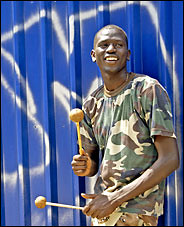
"Ceasefire:" African hip-hop from Sudanese singer Emmanuel Jal / Luz Martin photo
Originally uploaded by trudeau.
Straight Out of Sudan: A Child Soldier Raps
By WILL HERMES
THE consensus among American rappers may be that happiness, as John Lennon once sang, is a warm gun, but Emmanuel Jal is more ambivalent on the subject. Which is particularly interesting given that he spent much of his childhood as a conscripted soldier in the Sudan People's Liberation Army.
"I first held a gun when I was 7," he recalled in August via phone from North London, where he was staying with relatives. "But I didn't fire one until I was 8, when I was in training for the S.P.L.A. Before you fire, you shiver and you shake a lot. But after you fire you become brave and you want to fight even more."
On the forthcoming CD "Ceasefire" (Riverboat, Oct. 11), Mr. Jal raps in four languages - Arabic, English, Swahili, and Nuer - and doesn't mention guns in any of them. The word peace, however, figures prominently. The recording is a collaboration between Mr. Jal, a young Christian from the south of Sudan, and Abdel Gadir Salim, a venerable Muslim musician from the north, and it is partly a tribute to the Jan. 9 peace agreement that nominally ended the bloody civil war in Sudan - a Muslim-Christian struggle that has riven Africa's largest nation in area on and off for decades.
Mr. Jal's story, in its own way, fits into the classic rap paradigm of oppression and transformation. He was recruited by the southern Sudanese militia in Ethiopia, where he and thousands of other essentially orphaned Sudanese children (the so-called lost boys) fled during the 1980's and 90's to escape the war, hoping for shelter and education. After four years of service he met Emma McCune, a British aid worker who became something of a celebrity when she married Riek Machar, the military commander who would later become vice president of southern Sudan. McCune took a shine to Mr. Jal, then roughly 11 (he's not sure of his precise age), and smuggled him onto a cargo plane to Nairobi, Kenya, he said, where a few months later, in 1993, she died in a car crash. Mr. Jal began making music after her death, scored a regional hit (The "I Have a Dream"-style anthem "Gua"), and was soon an international star.
If it sounds like the stuff of movies, it soon will be. Deborah Scroggins's book about McCune, "Emma's War," which touches on Mr. Jal's relationship with her, is being made into a film starring Nicole Kidman. And there is talk about a biopic on Mr. Jal's life. But unlike "Get Rich or Die Tryin,' " the forthcoming film about the hard-knock adventures of the Queens rapper 50 Cent, a film about Mr. Jal could portray an altruistic and deeply religious artist who works with organizations like Amnesty International and War Child International.
Given his background, it is easy to view Mr. Jal as more of a metaphor than an artist - a Christian seeking peace with Muslims, a product of violence who rejects violence, a refugee turned spokesman. In Britain last year he became a cause célèbre with a thick press packet even though his sole recording, the religious-minded 2004 LP "Gua," was (and still is) available only as an obscure Kenyan import. The publicity even helped earn him an invitation to perform in the multicity Live 8 concerts organized by Sir Bob Geldof to raise awareness of global poverty - although Mr. Jal was relegated to a tiny satellite event for African artists that never made the broadcast.
"I met Bob Geldof and he told me I have to sell four million copies of my CD before I can perform at Hyde Park," Mr. Jal recalled, referring to the event's main location in London. "I was thinking someone like me needs to be exposed so people would hear the message I have. And if they like my music, they could buy it - it would be a good chance for practicing fair trade," he added, laughing.
"Ceasefire" is a step toward that exposure. As a collaboration, it is tentative. Because of visa problems, Mr. Jal and Mr. Salim were never in the studio together; the album was recorded piecemeal in London and Nairobi and assembled later. As a rapper, Mr. Jal has a gentle, colloquial flow that switches easily among languages, often in midverse. Songs performed by his group, the Reborn Warriors (like Mr. Jal, many of its members are former child soldiers), gallop lightly and steadily, combining Western and Eastern percussion with synthesizers beneath simple call-and-response choruses and reed flute or sax solos. Things get more interesting on tracks featuring Mr. Salim's ensemble, which rides a seductive 6/8 rhythm known as merdoum that swirls like a desert sirocco, and showcase pungent sax lines that recall the Ethiopian jazz used in Jim Jarmusch's recent film, "Broken Flowers." Mr. Jal tries to find a way into these latter tracks, with only partial success (his nearly spoken-word contribution to "Asabi"); musical dialogues, like political ones, take time to flower.
It will be interesting to see how "Ceasefire" registers in the American market. African hip-hop is a lively, multifaceted scene, and albums by X-Plastaz of Tanzania and Daara J of Senegal have secured distribution in the United States alongside compilations like "Africa Raps" (Trikont) and "The Rough Guide to African Rap" (World Music Network). But most of the scene's output is unavailable outside of immigrant communities, and world-music labels like Nonesuch and Stern's have largely ignored African hip-hop.
"Your average world-music fan doesn't own any Wu-Tang Clan albums," said Ben Herson, a Brooklyn-based producer who owns Nomadic Wax, a label devoted to exposing African hip-hop in America. "And a lot of people see African hip-hop as a corruption of traditional music; for some world-music labels, it might just be too spicy."
American hip-hop, meanwhile, tends toward the xenophobic. But with the explosion of Spanish-rapping reggaetón that may be changing. Mr. Jal said he hoped to work with American rappers in his next project - among his favorites are Nas, the Fugees and Kanye West ("people who have positive messages"). But rap - and music in general, he conceded - is still new to him. "The music I grew up with was bullets and bombs," he said, mimicking the sound of machine-gun fire. "I'm still learning."
Given hip-hop's love of underdogs who have been through the valley of the shadow of death, Mr. Jal may have precisely the background he needs.
Subscribe to:
Posts (Atom)


